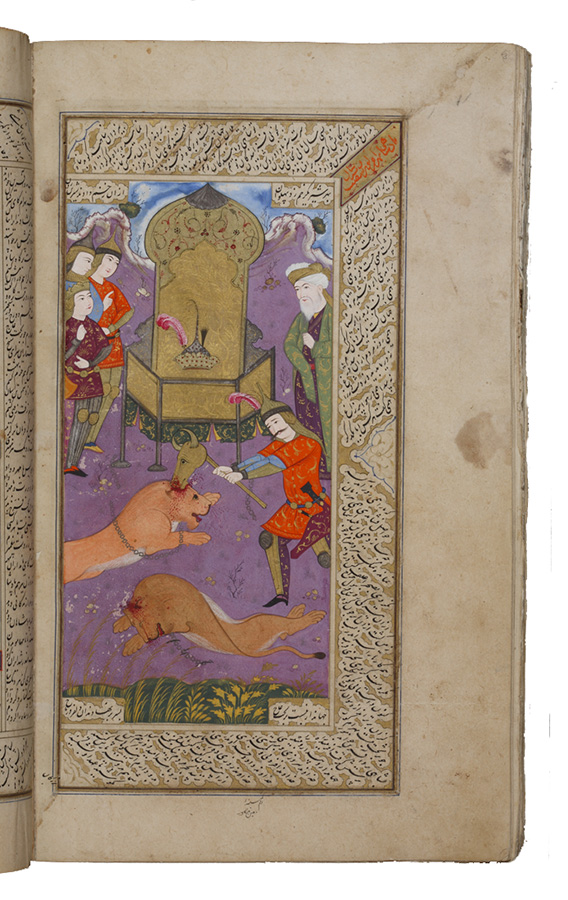Manuscript B, no. 6-410 (David folio 258b)
Bahrām Gur Kills the Lions to Gain the Throne
Location: The David Collection, Copenhagen, Denmark, #217/2006, folio 258b.
Page: 35.2 x 21.8 cm.
Painting: 23.3 x 11.5 cm. (Scaled)
Text area: 28.8 x 14.3 cm. (Scaled)
Signature in the center of the lower margin: raqam-e kamina moʿin-e moṣavver.
Bahrām, the son of Shah Yazdagerd, was sent to live in Arabia as a small child. As he grew, he gained a reputation as an excellent hunter with an eye for the ladies. When he learned of his father's death, he returned to Iran with an army, but the Iranians refused to accept him as their king until he had proved himself. They challenged him to take the throne from two lions that were chained to it. As Bahrām approached the throne, ox-headed mace in his hand, one of the lions burst its chains and charged at him. He smashed the mace onto its head and felled it, then turned to the other one and also did it in. After that he sat on the throne as the new shah of Iran.
Here Bahrām polishes off the second lion, while soldiers and either an archmage or his companion, Ḵosrow, look on in amazement. The golden throne with the crown on the seat dominates the upper half of the composition. Painted in two tones of gold, the throne is decorated with trees and bushes of the type found in the murals in many of the illustrations in this manuscript. Several other mid-17th century Shahnamas contain illustrations of this scene with the action taking place inside a palace or with a smaller throne, but the lions, throne, and ox-headed mace are all iconographically necessary and are found in all images of this very popular scene.
Painting references:
Canby_ Journal_2010, p. 76 no. 40 and p.107, fig.39.
Text references:
Warner, VI, pp.409-11.
Photo: Permille Klemp. Courtesy of The David Collection, Copenhagen
Sheila R. Canby
Last Updated: August 14, 2014 | Originally published: 2010
